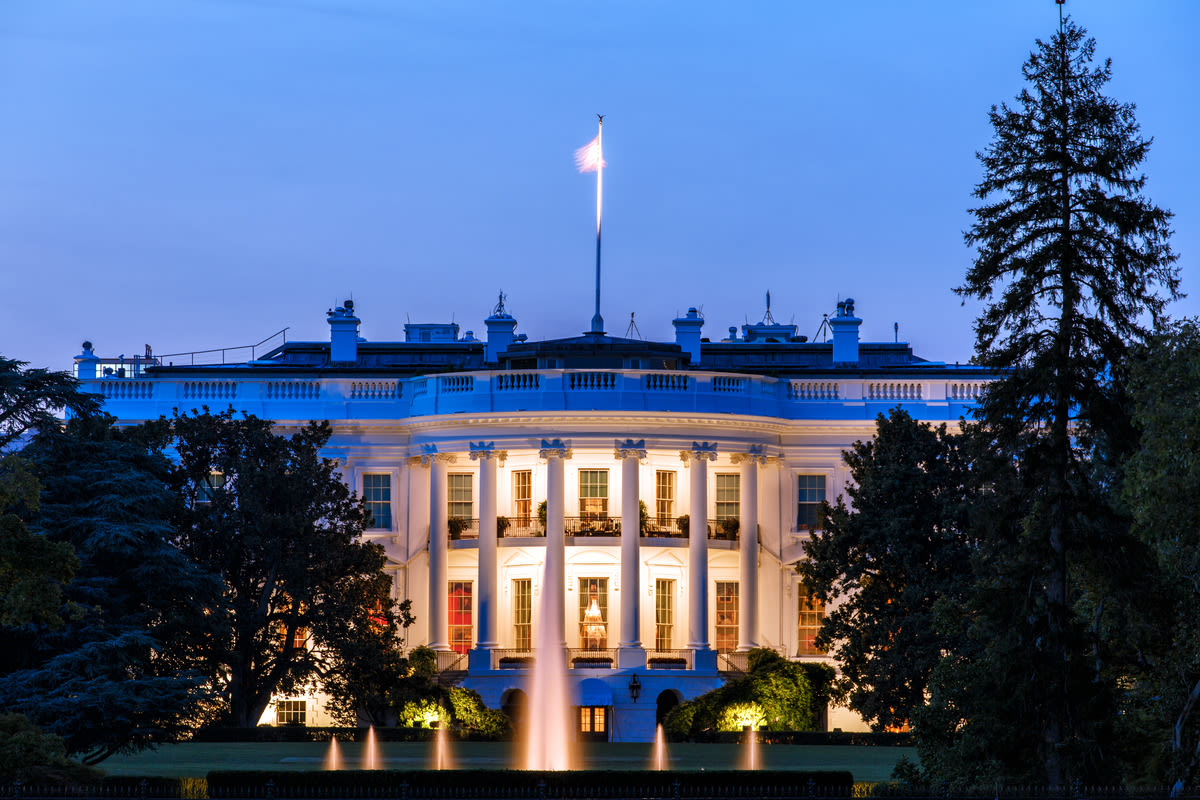
July 16, 2025
What We Learned from Amazon Prime Day 2025 and Rival Events: Key Takeaways for Supply Chain Leaders for Peak Season
Tags:

July 16, 2025
Summer Sales Events Recap: What We Learned from Prime Day and Other Shopping Events
July 2025 marked the convergence of several major summer shopping events, resulting in one of the year's largest consumer spending periods—on par with Black Friday and Cyber Monday in total sales.
For the first time ever, Amazon, Walmart, and Target simultaneously launched their respective marquee, members-only sales events—Amazon Prime Day, Walmart Deals, and Target Circle Week—at the same time. This synchronization aimed not only to drive sales and increase subscription memberships with each retailer, but also to serve as a litmus test for consumer demand amid shifting tariffs policies and an uncertain macroeconomic backdrop.
Retailers are also using competing sales events as a trial run for the Peak Season, aiming to capture consumer attention and fine-tune marketing strategies, inventory planning, and fulfillment capabilities. The outcomes of these events will help determine whether businesses will need to revise sales and shipping projections should demand begin to wane, or if consumer spending will continue its historical growth during the holiday shopping season.
In this recap, we will break down performance data from each retailer's event; assess the ripple effects across the logistics sector; and discuss key takeaways to help brands, carriers, and shippers prepare for Peak Season.
Sales Recap: Amazon Prime Day vs. Walmart Deals vs. Target Circle Week
Amazon Prime Day
Amazon's Prime Day once again proved to be a record-breaking success, defying macroeconomic uncertainties related to U.S. tariff and trade policies. Over the four-day sales event, American households spent more than $24 billion on Amazon, representing a 30.1% increase compared to the previous Prime Day, and more than doubling consumer spend on Black Friday 2024, according to Barron's.
The growth in sales is largely attributed to Amazon extending the shopping event from two days to four days, giving consumers time to research and compare products and for sellers to extend discounts. This was evident in the platform’s performance during the final two days of the event, when sales spiked 165% year over year compared to what would have been Prime Days 3 and 4 last year.
Walmart and Target hosted competing sales events during the same week as Prime Day, which may have siphoned off some of Amazon's already massive sales numbers. Numerator data reveals that over half of surveyed Prime Day shoppers price-compared with other retailers before purchasing. Surveyed shoppers also looked to concurrent sales events that week, with many Prime Day customers (49%) also shopping or planning to shop Walmart Deals and/or Target’s Circle Week (35%).
Adobe shared that daily sales for key product categories saw major growth since June, with the most popular Prime Day products being:
- Kids’ apparel (+250%)
- Home security products (+185%)
- School supplies (+175%)
- Refrigerators & freezers (+160%)
- Games (+160%)
- Headphones & speakers (+155%)
- Car seats (+145%)
- Luggage (+145%)
- Vacuum cleaners (+140%)
- Power tools (+135%)
- Computers (+125%)
- Smartphone accessories (+120%)
- Storage furniture (+120%)
- Televisions (+90%)
- Small kitchen appliances (+90%)
- Dorm essentials (+84%)
- Exercise equipment (+80%)
Walmart Deals
While Walmart does not typically release its sales data from Deals Week, the retailer expects to capture a significant share of consumer spend over Prime Day. Reuters reports that Walmart and Target are estimated to reflect 40% of non-Amazon spending over the course of Deals and Circle Week.
This year, Walmart expects a significant breakthrough by extending its Deal Days discounts to in-store customers for the first time. Unlike last year, when these discounts were exclusively online, this move is particularly impactful as over 80% of Walmart's revenue comes from its physical stores. Walmart's extended six-day sales event—two days longer than Prime Day—aimed to divert consumer spending from Amazon.
By expanding their sales event to physical stores, and timing Deals Week during Amazon’s Prime Day, Walmart expects huge revenue gains for Q2, with the retailer projecting to exceed its target of 3.5% to 4.5% growth. Walmart’s performance actuals will be revealed in their next earnings release.
Target Circle Week
From July 6-12, 2025, Target hosted its highly anticipated Target Circle Week, delivering major savings across summer essentials and back-to-school items. Shoppers enjoyed up to 50% off a wide range of products, including electronics, school supplies, groceries, and more, with daily rotating “Deal of the Day” offers that even included 10% off Target GiftCards.
Target Circle 360 members benefited from 24-hour early access starting July 5, along with exclusive perks like free same-day delivery and $50 off their first delivery order. The event catered specifically to educators and students, offering 50% off Circle 360 memberships and a one-time 20% storewide discount for verified students, making it one of Target’s most inclusive and robust promotional events to date.
Target entered Circle Week 2025 with more than just promotional goals—it was a strategic effort to combat declining sales and re-energize consumer engagement. The retailer had ended fiscal year 2024 with a nearly 1% drop in overall sales, and the first quarter of 2025 saw an even steeper decline, with revenues down 2.8%.
These figures signaled mounting pressure from consumer boycotts and intensifying competition from rivals like Walmart and Amazon. By leaning into deep discounts, exclusive loyalty perks, and targeted outreach to teachers and students, Target aimed to not only boost short-term revenue, but also rebuild customer loyalty and momentum heading into the critical back-to-school and holiday shopping seasons.
While sales metrics for Target's event are currently unavailable, Target anticipates that its Circle Week event will attract approximately 35% of Amazon's shoppers during the week, capitalizing on heightened consumer shopping demand spurred by Prime Day.
Key Learnings for Ecommerce Merchants and Shippers from Summer Sales Events
Now that we’ve covered Prime Day’s 2025 performance, we’re ready to discuss what merchants can learn from the summer sales events, and essential strategies that they can use to prepare their businesses for Peak Season. Below, we’ve outlined the key lessons merchants and shippers should carry forward to meet periods of rising consumer demand with speed and confidence.
Lesson 1: Prime Day and other sales events are a logistics stress test
July 2025 marked a pivotal shift in retail seasonality. For the first time, Amazon, Walmart, and Target aligned their most aggressive sales events, creating a mid-year consumer spending surge that rivals Black Friday and Cyber Monday. This served as an opportunity for businesses to test fulfillment and logistics capacity under Peak-Season-level demand conditions.
For logistics and shipping providers, this signals a massive shift away from the traditional Peak Season playbook. Volume surges can now be expected to occur multiple times a year, and they’re increasingly influenced by promotional calendars from major retailers, not just holidays. Network elasticity, advanced financial planning, and supply chain visibility are more crucial than ever.
Merchants may consider partnering with a third-party logistics (3PL) provider that possesses the established infrastructure and specialized knowledge necessary to handle spikes in consumer demand. Flexport, for example, provides merchants with an integrated, end-to-end platform specifically designed for this level of responsiveness. Flexport’s platform offers real-time, multi-modal visibility into shipments, comprehensive milestone tracking, and immediate exception alerts, effectively granting merchants a central command view of all global freight operations across ocean, air, and ground transportation. When combined with their ecommerce fulfillment services and distributed network of warehouses, merchants gain control and visibility over their entire supply chain.
Flexport Capital offers merchants working capital to explore growth opportunities, or quickly increase inventory. This access to capital allows them to place large inventory orders or expedite shipping in response to surging promotional demand, all without immediate disruptions to their finances or cash flow interruptions.
Merchants that treat events like Prime Day as dry runs for Peak Season will benefit most from platforms that unify planning, financing, and fulfillment into one ecosystem.
Lesson 2: Competitive timing means heightened delivery expectations
The overlap of Prime Day, Walmart Deals, and Target Circle Week forced retailers to compete not only on price and product but on speed. Consumers conditioned by years of “free two-day shipping” are now increasingly expecting same-day fulfillment options—especially when comparing across platforms during a major event week.
Trends indicate that consumers are becoming more discerning and evaluating more options than ever before making a purchase. This is largely because consumers are presented with more retail options and more advertising across the ecommerce landscape. This shift manifests itself in a cart abandonment rate of roughly 70% as customers search for the best deal, along with the fastest, most convenient shipping options.
For ecommerce merchants, tight fulfillment timelines mean more than promising speed—it requires infrastructure. Flexport’s ecommerce fulfillment and wholesale fulfillment offerings enable merchants to offer customers fast shipping through a distributed network of U.S. warehouses. Brands can fulfill direct-to-consumer and marketplace orders (Amazon, Shopify, Walmart Marketplace, Target) in as little as one to two days—providing a delivery experience that drives conversion during time-sensitive promotions.
Coupled with predictive analytics through the Flexport platform, merchants can optimize fulfillment routes and allocate inventory regionally based on real-time demand.
Lesson 3: Delivering a seamless omnichannel experience is essential
Walmart’s strategic decision to extend Deals Week discounts across its physical stores for the first time reflects that shoppers expect a seamless, omnichannel experience. Whether they’re shopping online, via mobile, or in store, convenience and immediacy drive purchasing decisions. This shift demands greater alignment between inventory systems, fulfillment operations, and your business’s promotional calendar.
For those merchants who want to deliver an integrated, omnichannel experience, a dedicated logistics partner can make the transition seamless. A 3PL like Flexport can allow brands to sync inventory across warehouse locations and retail stores, enabling merchants to provide services like “Buy Online, Pick Up In Store” or same-day local delivery. Merchants may also benefit by directly integrating their online stores with major online marketplaces like Amazon and Walmart.
As omnichannel shopping continues to evolve, the most successful brands will treat logistics not as a back-end function, but as an extension of their customer experience strategy. Flexport’s ecommerce fulfillment services can help your business meet these seasonal surges in customer demand, provide fast and affordable delivery, and help your brand grow and scale.
Lesson 4: Leverage major sales events to inform demand and inventory planning ahead of Holiday Peak
Prime Day and its competing summer sales events presented merchants with critical forecasting opportunities that can be used to inform their Peak Season strategy. These high-velocity sales weeks provide valuable, real-world data on consumer demand, product performance, and fulfillment resilience under pressure. By analyzing SKU-level sales trends, promo-driven volume surges, and regional purchasing behaviors from these events, you can refine inventory positioning and avoid costly mistakes during Peak.
Evaluating how your products moved during these July promotions helps determine which SKUs warrant early re-ordering and which may need to be deprioritized ahead of the holiday season. Mapping these trends against your warehouse capacity and lead times helps prevent overstocking that triggers reserve storage fees or, worse, understocking during Peak months.
This type of demand planning shouldn’t be treated as a one-off response. When you revisit and refine your forecasting after each major promo cycle, your predictions grow more precise year over year—creating a more agile and profitable Peak strategy.
If you're working with a Flexport team member, they can help you translate July's promotional insights into concrete, data-backed demand plans, ensuring you’ll be ready for Holiday Peak Season.
Lesson 5: Tariffs and their potential impact on pricing loom large
Tariffs played a significant role in shaping the dynamics of Prime Day this year. Some third-party sellers—who account for nearly 60% of Amazon’s marketplace—scaled back or skipped discounts entirely to protect their thinning margins as import costs surged under new U.S. tariff policies.
Tariff concerns also fueled Amazon’s decision to extend Prime Day to four days (July 8–11), as Amazon hoped to stimulate buying interest before prices inevitably increase. Despite slower early sales and cautious consumer behavior, it was clear shoppers were motivated by future price increases, prompting heavier back-to-school and home essentials purchases.
So, what can merchants learn from Amazon’s resilience and capacity to adapt to a high-cost environment?
- Diversify supply chains to reduce dependency on regions affected by tariffs to help mitigate cost fluctuations.
- Implement targeted promotions on essential or high-demand products, including product bundling, to drive sales.
- Utilize customer data for personalized marketing efforts to optimize engagement and conversion rates.
- Align promotional efforts with larger retail events, including Black Friday and Cyber Monday, to increase visibility and capitalize on heightened consumer interest.
Curious how tariffs may impact your supply chain ahead of Peak Season planning? Try Flexport’s Tariff Simulator to instantly calculate duties, spot special rates, and stay ahead of changing trade policies.
Ready to get started? Flexport can help.
At Flexport, we strive to provide merchants with the logistics support they need to tackle Peak Season. Our fulfillment experts can help you refine your shipping, tracking, and returns procedures, so you can focus on building a memorable brand experience that will drive sales and delight your customers.
Talk with a fulfillment expert today to learn more about Flexport’s competitive shipping and logistics services.
About the Author

July 16, 2025




